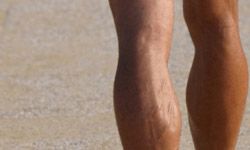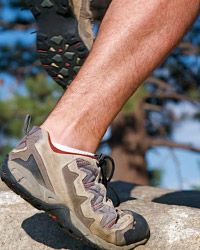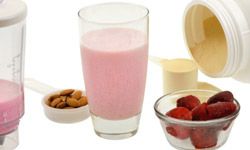Calves might not be the sexiest, most notable part of your anatomy, but when toned and trained properly, they can still draw attention and boost your overall leg power. Thankfully, it's not too difficult to buff up the calves. As long as you're willing to follow a few simple guidelines, you'll be effortlessly running up stairs in no time and looking good doing it.
The calf muscles are made up of three parts: the gastrocnemius, which is the big muscle, the soleus, which is in front of it and the Achilles tendon. While not included in the calf region, the tibialis anterior, the muscle in the front of the leg, is important to calf growth as well.
Advertisement
As with any workout, you'll want to stretch out your muscles and warm up before doing these exercises. For calves, this could mean doing leg extensions, light running on a treadmill or cycling [source: Valeo].
Now that we've covered the basics, let's take a look at a few excellent ways to get eye-popping growth in those calves.


